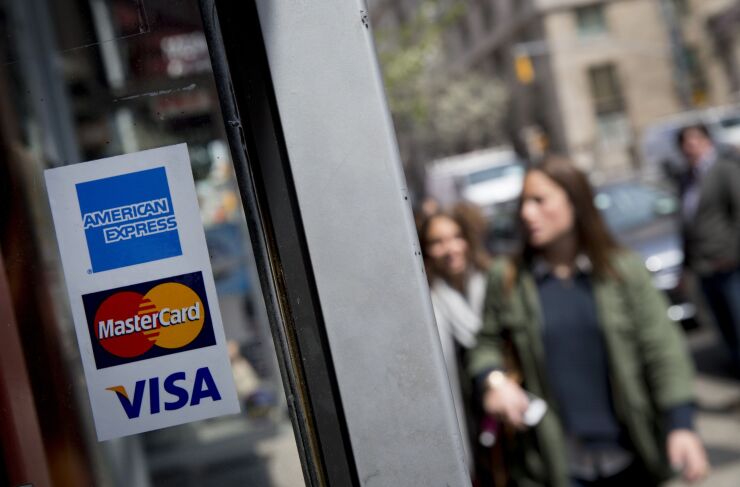The major card networks have heavily invested in broader services as transaction processing loses its luster, a strategy that’s provided a ray of hope as retail and travel industries remain sidelined.
Both card brands have also made a series of deals designed to improve retailers’ ability to serve consumers, placing Visa and Mastercard at the front end of the relationship as much as the transaction-processing back end.
Mastercard has partnered with

Microsoft and Mastercard have also worked together on
During Thursday’s earnings report, Mastercard CEO Ajay Banga outlined its broad range of services, including “insights, analytics and cybersecurity tools” that allow it to adapt to its partners' changing needs. Banga also highlighted Mastercard’s planned acquisition of Finicity.
“The shift to digital has a downstream impact into our services — more digital vs. cash is more data, more data is more desire and more need for data or our cyber solutions,” said Michael Miebach, Mastercard’s president, during Thursday’s earnings call. Miebach will become CEO after Ajay Banga exits the role at the end of the year.
Finicity will provide a new source of innovation for Mastercard's merchants and consumers, Miebach said. “There’s credit decisioning, account verification and we’re also attracted to Finicity’s approach to opening banking,” Miebach said.
Both card networks have also worked on “smart city” projects that cover transit technology and broader municipal services, such as parking.
These were ongoing strategies before the pandemic, but have become a vital way for the card networks to offset losses on traditional payment volume with service-oriented revenue while waiting for payment flows to recover.
“Debit and credit card payments are still the bread and butter of the card network, but they are becoming fintech companies,” said David B. Shipper, a senior analyst for debit credit and prepaid cards at Aite Group, noting both
During its earnings call this week,
“While COVID-19 has proved to be challenging, Visa has opportunities,” said Logan Purk, a researcher at Edward Jones. “The biggest benefit is the massive shift to online and digital payments. This is key as Visa pointed out consumers that buy online tend to spend more than traditional brick-and-mortar shoppers. Also, as more spending moves online, this could spur more demand for Visa's add-on services, such as security.”
As more commerce moves online, consumers and merchants need a different range of services than in the past. That’s given Visa’s earlier decision to
“Value-added services have grown quickly,” said Visa CEO Al Kelly during this week’s call, discussing technology partnerships that broaden merchant services, particularly in areas such as risk and security — giving Visa areas to provide services that aren’t directly tied to payment transactions. “As e-commerce has expanded and new sellers come into online marketplaces, there’s added capabilities that they need. And these use cases do bring a higher potential for fraud.”
And during its earnings call,
The card brands have of course not abandoned their payment processing mission; they’re spending heavily to establish domestic processing in China despite the political headwinds, for example.
But offering services such as digital ID, spend analytics and data management provide a way to position themselves as technology providers.
For years, this was seen as a way for the card networks to avoid being seen as a “dumb pipe” that set interchange fees from billions of transactions to maintain their balance sheets. These strategies now give the networks a way to lean into the recovery.
For the loss of interchange revenue due to travel restrictions, unemployment levels, and general consumer angst, the financial services industry needs to increase profitability through both new revenue streams and cost reduction, said Krista Tedder, head of payments for Javelin Strategy & Research. “To truly manage the challenges of the coronavirus economy, digital transformation needs to move beyond the user experience and transform the technology and products that are included in financial services.”
This includes point of sale loans, micro-transactions, micro-investment options, cryptocurrency trades, real-time and instant payments, Tedder said.
“Everything is on the table for evaluation of what the customers will want long-term to balance out the loss of transactional revenue,” Tedder said. “This is not a short-term problem that the financial services industry needs to solve for, but a long-term sustainable change.”





